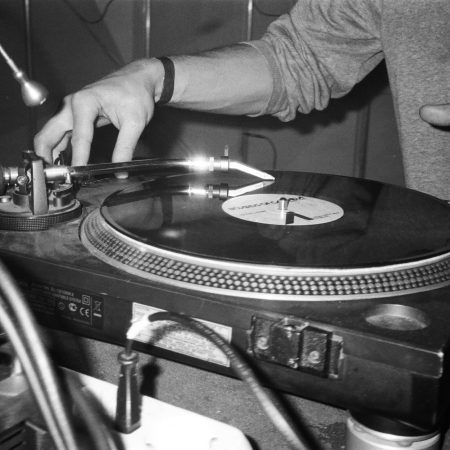Writing the second edition of Listening with Lisa– I’m Lisa Marino, a music technology and production major at the University of North Florida. Each week, I attend concerts by UNF music ensembles and write about them here. For the parents who can’t make the trip, the fellow music fanatics, or anyone looking for some insight on our School of Music.
Last week, I wrote about a lecture given by Dr. Travis Garrison at jemFEST, an annual music technology festival hosted at UNF. Garrison spoke about the evolution of his career and gave advice on how students can combine music and technology in the professional world.
Garrison presented select compositions a few hours after his lectures. He performed a mix of electroacoustic and fixed media compositions. While listening to each piece, I noted my thoughts.
Mutative Structures in Metallurgy
Atonal piano accompaniment and low frequency ambiance play a duet, fabricating an eerie feeling with major harmony interspersed. A sense of rhythm is absent as Garrison plays the bass notes with heavy accents. When the melody ascends, so does his force. The fortissimo parts are broken up with gentler techniques on higher chords. I notice a lot of major seventh intervals. This piece sounds like an expression of anger with episodes of happiness, as if Garrison’s emotion was undecided while composing.
The fixed media travels rapidly from left to right pan, sounding intentionally choppy at certain points. I wish I sat farther back in the recital hall, farther away from the speakers.
After an exponential build up to heavily processed layers of sound along with passionate piano accompaniment came a soft sequence. Arpeggiation of chord after chord atop the familiar ambiance of low frequencies arose the question of what will happen next. Garrison continued to softly press each key as the processing effects of delay and reverb increased.
The piece ended. The audience applauded. Garrison took a bow.
Cross Talk
Another fixed media piece encompasses the speakers. I hear a steady static sound that eventually glitches from right pan to left pan. Its pitch gradually modulates from a higher to a lower frequency. The static prevails as a sub bass vibrates my chair. What sounds like a distorted fast-forward action on a TV is soon taken over by the sound of water swirling, flushing, and rippling at the same time.
The static comes back… speaker to speaker, it bounces. The first sense of pitch is brought into the sound profile, a synth. Shortly after its entrance, the synth is interrupted by the static once again. It never occurred to me that there could be so many forms of static in two speakers. Before listening to this piece, static was just that— an undesired burden in my speakers. Crosstalk uses static in an artistic way. This piece plays with the desirable and undesirable: major and minor harmony sequencing through the synth chords to an overwhelming experience of static ambiance and distortion.
Crosstalk is an audible illustration of the familiar and unfamiliar, the comfortable and the uncomfortable, safety and danger. Emanated in this piece is the known and the fear of the unknown.
Interdependency 22
A single repeated note on the Steinway piano is processed in the two speakers. After only a few bars, it’s clear that this piece was written with agitation. Short and detached notes turn into rich, dissonant chords. It’s never predictable what the next chord will be. A sense of rhythm lacks in this piece but is not completely absent. Suddenly, a major harmony emerges but is then swallowed by a rapid atonal sequence. Each rest between the notes sounds like a gasp for air.
…
Acousmatic music isn’t my favorite, but being exposed to the genre is eye-opening in the regard of electronic music production techniques. Processing effects such as time stretching, frequency modulation, or equalization don’t have to be used to the extent of making the audience scared (like acousmatic usually does), but can be used to enhance more traditional instruments.
Throughout the concert, my sister Anna kept jumping in her seat because of the sudden, loud sounds. She’s not used to this abstract music, and neither was I before being a music technology student. Anna told me acousmatic music makes her anxious.
“When I listen to this, logically, I know I’m safe, but something in my body thinks I’m in danger,” Anna told me after the concert.
“It gets better… sort of,” I said.
